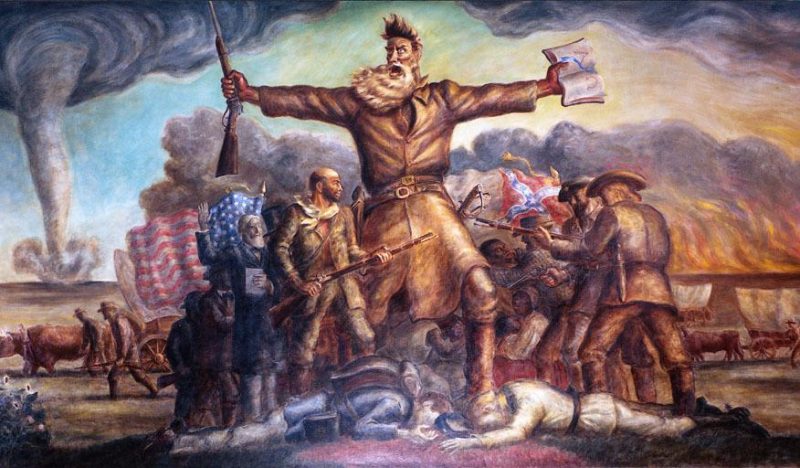
by John Steuart Curry (1897-1946), Oil and Egg Tempura
WALL\THERAPY IS RECIPIENT OF 2022 GRANT FROM JOHN STEUART CURRY FOUNDATION
WALL\THERAPY is thrilled to announce that the John Steuart Curry Foundation has awarded our non-profit a $25,000 grant for the year 2022 that will help us produce our ten-year anniversary festival.
Renowned American regionalist painter, John Steuart Curry believed that art should appeal to the common man. He also firmly believed that art should have meaning and say something beyond bucolic scenes. Best known for his powerful, socially, and historically located canvases and murals – paintings of actual people, real communities, and tangible geographies, Curry used his artistic talents to translate, and subsequently elevate the experiences of his fellow Americans by reflecting the beauty, triumphs, sins and sorrows that have helped to define our identity as a nation.
WALL\THERAPY will return to form in celebration of our tenth anniversary during a week-long summer festival taking place July 22-31, 2022, hosting approximately 14 total artists. This curation will include six artists specifically chosen for work and practice that honors the spirit of John Steuart Curry’s work. Together, all the artists will be creating murals at various sites with partnering neighborhoods and businesses across the city of Rochester.
WALL\THERAPY also plans to specifically highlight the impact of John Steuart Curry and help educate WALL\THERAPY supporters and the broader community about his work and legacy through our website, highlighting the artists selected to as part of this program, and how their work and WALL\THERAPY’s work carries on the spirit of John Steuart Curry.
ABOUT JOHN STEUART CURRY
John Steuarta Curry (1897-1946), belonged to a trio of painters including Grant Wood (1891-1942) and Thomas Hart Benton (1889-1975), best known for their associations with the Regionalist art movement, which developed in the 1930s as a response to the Great Depression. Regionalist paintings, murals, lithographs, and illustrations depict realistic scenes of rural and small-town life, primarily in the Midwestern United States. For Curry, the depiction of individual experience was of utmost importance to his artistic practice, firmly believing that art should have meaning beyond form and expression. His paintings (particularly his murals) are of actual people, real communities, and recognizable landscapes. He used these depictions to elevate the experiences of his fellow Americans reflecting the beauty, triumph, and sorrows that defined his generation’s identity. Curry set out to paint not just individuals, but communities, representing them in such a way that viewers recognized what they were looking at and were inspired to take a more active role in the lives of those around them.
One of Curry’s most famous murals Tragic Prelude (1937 – 1942) is located on the east side of the second-floor rotunda in the Kansas State Capital building in Topeka, Kansas. The most recognizable and photographed portion of the mural is the one the main wall. It depicts the abolitionist John Brown standing arms wide, a wild look on his face, standing atop the dead bodies of a Union and Confederate soldier, while more fight directly behind him. In the middle ground people can be seen fleeing westward, a wildfire chasing at their heels and a tornado coming close behind. On two additional walls located to the right of the main portion there are three additional figures. From right to left are Father Juan de Padilla (1500–1542) a catholic missionary and Francisco Vásquez de Coronado (1510 – 1554) the conquistador who led a contingent of Spanish, including Padilla, from what is now Mexico through the now southwestern United States into Kansas. To the left of Padilla and Coronado is a frontiersman standing over a buffalo he has presumably just killed.
The mural’s titled Tragic Prelude is a reference to the Bloody Kansas period of 1854 – 1860 during which Kansas saw a series of armed conflicts between parties fighting to make it a free or slave state. The conflicts which John Brown took part in are seen as the beginnings of the hostilities that would lead to the United States Civil War (1861 – 1865). When considered as a whole, the entirety of the mural discusses the colonization of North America as a tragic prelude to the generations of war that would be fought across its forests, plains, and mountains. Coronado and his contingent brought disease, enforced religion, and violence to the Indigenous peoples living in their path. The frontiersman continued to perpetuate the ideas of Manifest Destiny, and American expansionism that would lead to the decimation of the buffalo herds on the Great Plains and further push Indigenous people onto smaller areas of land. The possibility of Kansas being a slave state drove people like John Brown to take up arms leading to Bloody Kansas and an eventual Civil War. With World War One a close memory and the stirrings of renewed conflict in Europe when Curry began painting, this mural serves as a poignant reminder of how wars and the treatment of our fellow humans can have a resounding impact for generations to come.
In this mural we can see Curry’s goal: to depict the history of a Kansas in a way that the common man would understand and build a community around a shared history, including all its triumphs and sorrows. It is this legacy of painting in the name of community building and peaceful coexistence that WALL\THERAPY is creating murals in John Steuart Curry’s legacy.
